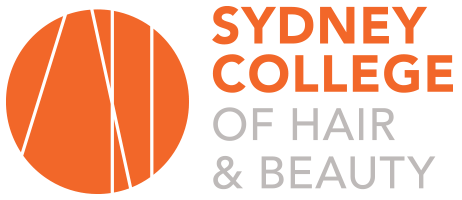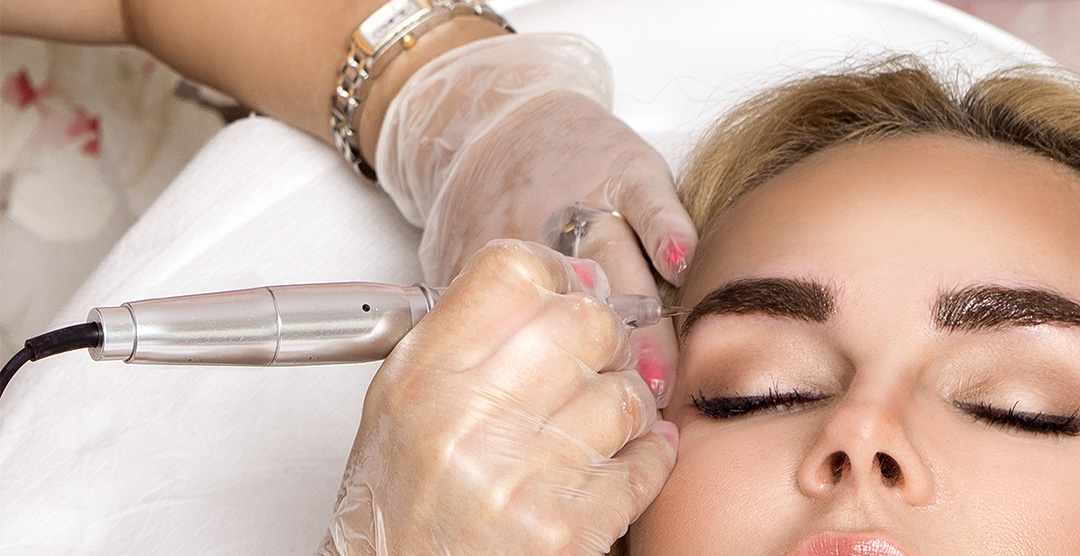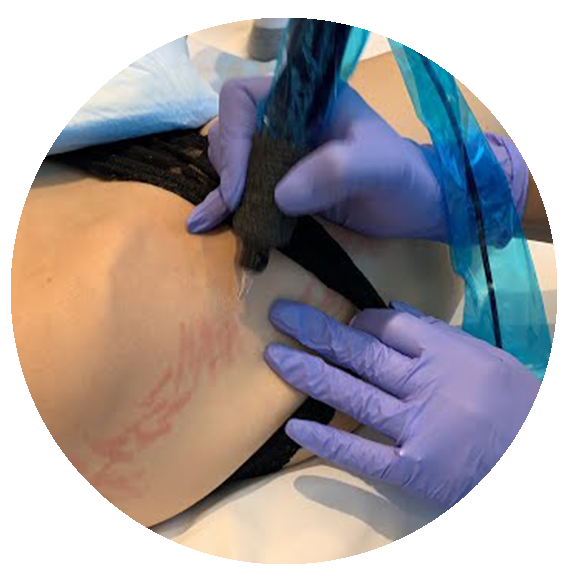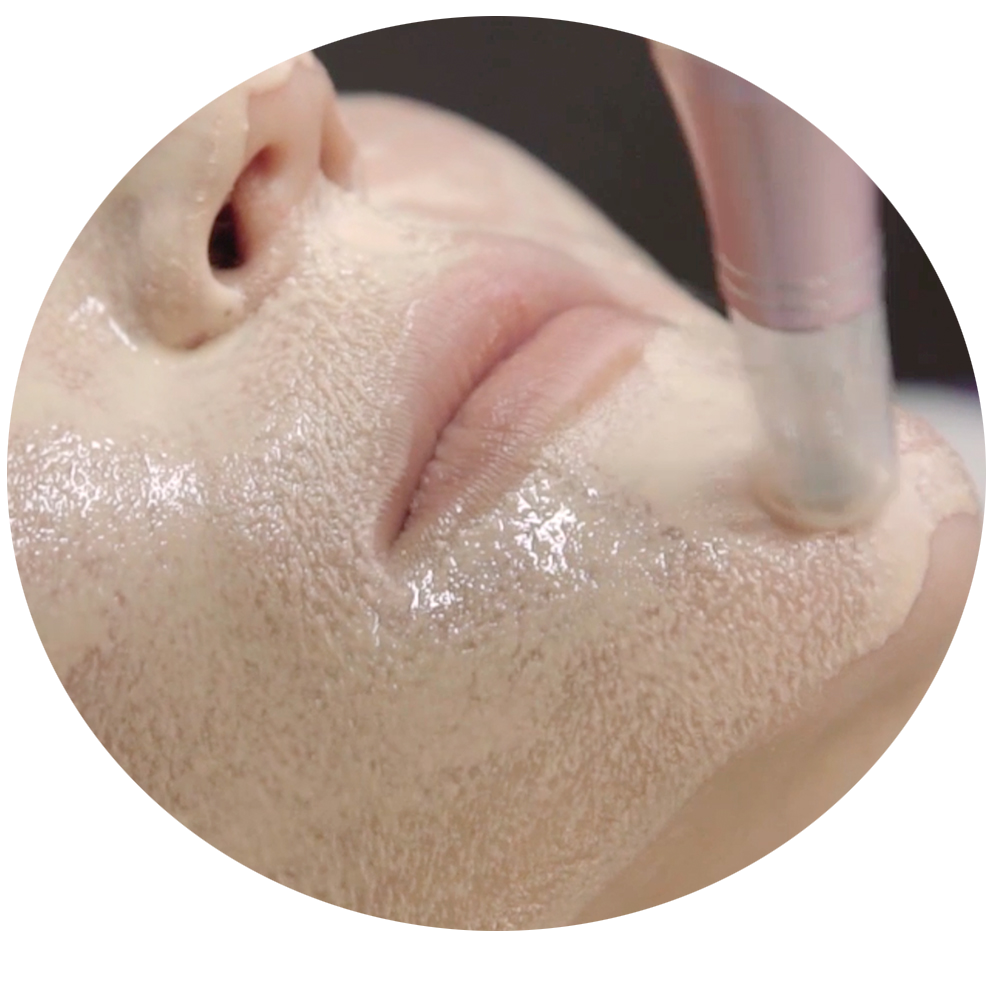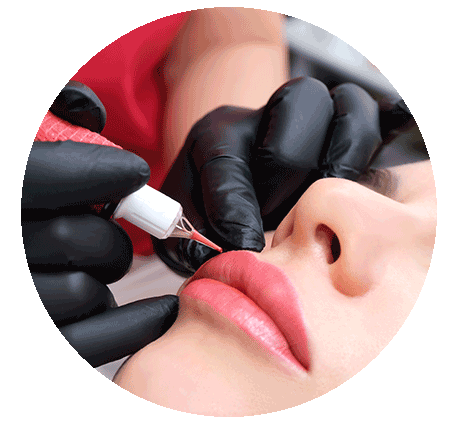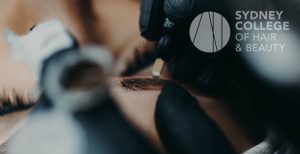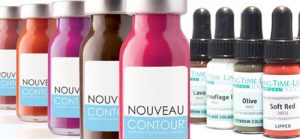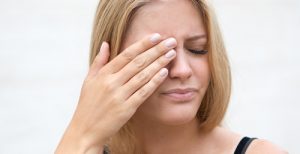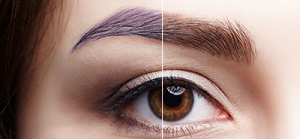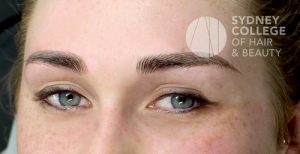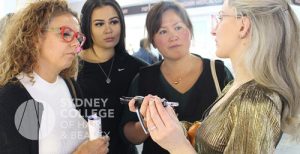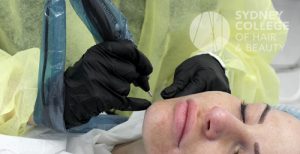The Importance of Patch Testing your Clients
And how to do it for cosmetic tattooing , microblading, & Plasma Fibroblast
Patch testing your clients is a topic that is often overlooked in many cosmetic tattooing courses. It’s not a requirement to patch test every client who comes to you for cosmetic tattooing or other services such as henna brows, or fibroblast plasma treatments, but it is vital that you can recognise when patch testing is required.
In order to identify those clients who do require patch testing, it’s important to ask the right questions on your consultation forms and to know how to see the red flags. You should ask about your clients skin history and ask for details about any allergic reactions they may have had in the past, as well as asking about and observing the way their skin forms scar tissue after trauma.
Ethnicity and skin Fitzpatrick is also a factor that comes into play when analysing the need for patch testing your clients.
Every client is unique and you must be able to evaluate each area of risk to determine the risk of an adverse/unwanted result from services which involve the skin.
Risk Identifiers for Cosmetic Tattooing Patch Testing
- Previous allergies to hair dye, henna, pen inks
- Previous allergies to topical anaesthetics
- History of keloid (raised) scarring from skin trauma
It is also a good idea to keep an eye out for any other allergies such as aloe vera which may be a key ingredient in aftercare or prepare products that you use during treatment.
Risk Identifiers for Henna Brow Patch Testing
- Previous allergies to hair dye, henna, pen inks
Risk Identifiers for Fibroblast Patch Testing
- History of keloid (raised) scarring from skin trauma
- Ethnic background – asian genetics can be predisposed to keloid scarring
- Fitzpatrick scale – the higher the ranking, the higher the risk of hyperpigmentation following any trauma to the skin
- Previous allergies to topical anaesthetics
Once you have identified that a client requires patch testing, then what do you do? The best procedure for patch testing varies according to the service you are testing for. I will outline each below.
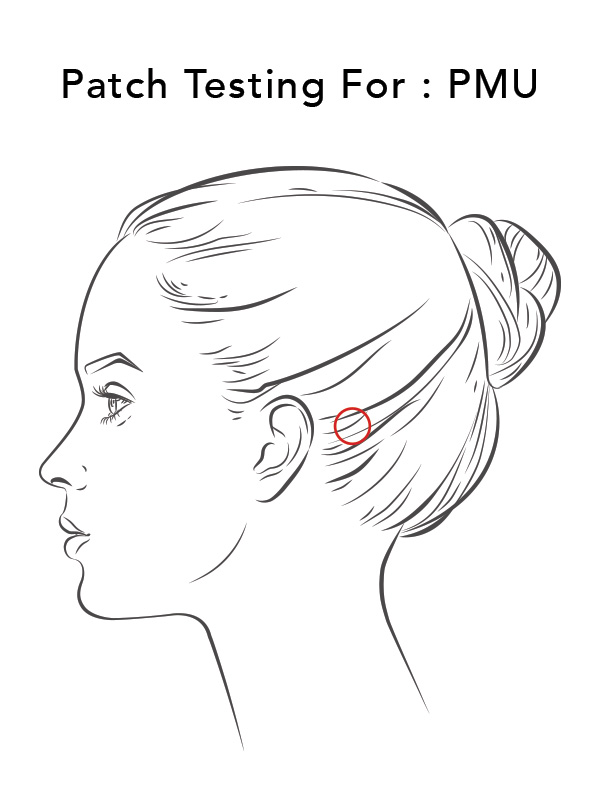
Patch testing for Cosmetic Tattooing & Microblading Clients
What to patch test for: topical anaesthetic allergies, pigment allergies
When to patch test: 48 hours before the treatment itself
Where to patch test: While cosmetic tattoo pigments are semi permanent there is always a risk that a portion of the pigment will never fully disappear from the clients skin. For this reason I recommend that patch testing be carried out in an inconspicuous area. My favourite is just beyond the hairline, behind the client ear. This is a spot where any lingering pigment will not be visible or unsightly. You only need to test with a small amount of pigment. You can use a micro blade or lance to scratch the skins surface and implant a small amount of the pigment.
To patch test for topical anaesthetic reactions you can place a small amount of numbing cream anywhere on the skin and monitor the area for 10-15 minutes. I find it easiest to draw a circle on the skin around the area to be tested. You can also apply an occlusive or barrier film over the applied topical anaesthetic to speed up the application time and prevent the cream from being accidentally rubbed off.
What to look for: if the client has an allergy to the anaesthetic they will report a burning or stinging sensation while the cream is in contact with the skin. The skin will also flush red where the cream has been applied.
If the client has a reaction to the pigment the area will appear red and inflamed with significant swelling, and weeping from the wound itself. The body will be trying to ‘push’ the pigment/irritant out of the skin.
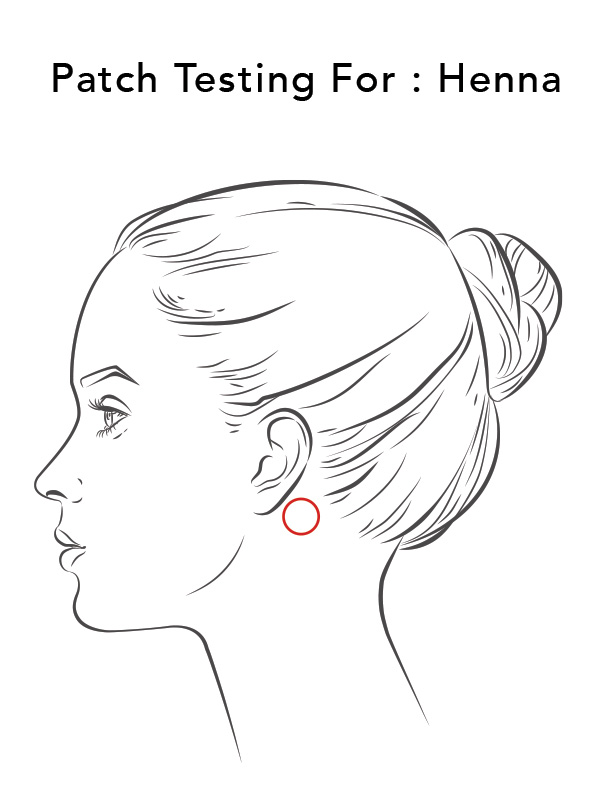
Patch testing for Henna Brow Clients
What to patch test for: pigment allergies
When to patch test: 48 hours before the treatment itself
Where to patch test: Similarly to cosmetic tattooing it is best to patch test in a small inconspicuous area such as just beyond the hairline behind the clients ear. Apply a small amount of the henna product you use and leave for 10-15 minutes before removing as normal.
What to look for: If the client has a reaction to the pigment the area will appear red and inflamed with significant swelling. It may appear to have a blister on the skin.
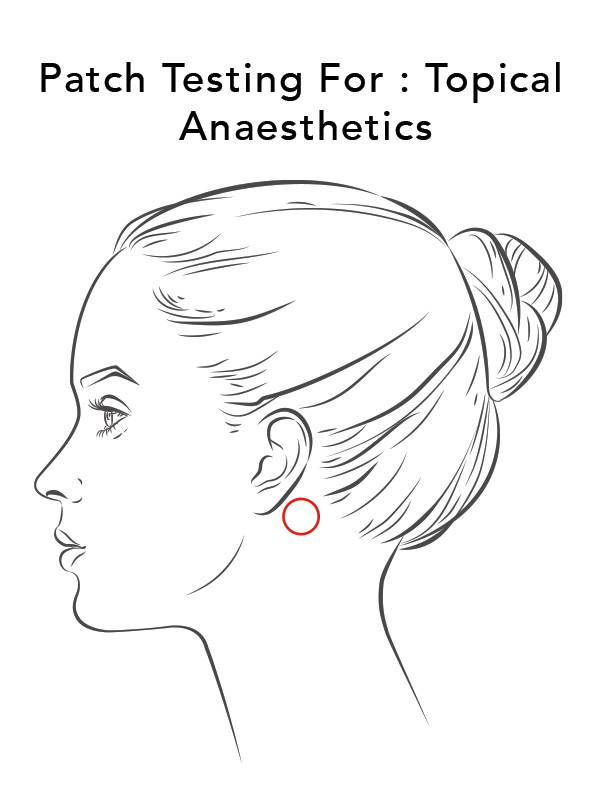
Patch testing for Plasma Fibroblast Clients
What to patch test for: topical anaesthetic allergies , hyperpigmentation
When to patch test: 3-6 weeks before the treatment itself
Where to patch test: To patch test for topical anaesthetic reactions you can place a small amount of numbing cream anywhere on the skin and monitor the area for 10-15 minutes. I find it easiest to draw a circle on the skin around the area to be tested. You can also apply an occlusive or barrier film over the applied topical anaesthetic to speed up the application time and prevent the cream from being accidentally rubbed off.
To patch test for hyperpigmentation it is recommended to perform a small plasma treatment patch of about 1 square cm of skin in an inconspicuous area. Remember that the skin on the body can take twice as long to show the final healed result as the skin on the face. So if you are intending to perform a treatment on the clients tummy, you will want to patch test on the body and allow additional healing time before analysing the result. If you are intending to perform a treatment on the clients face then it is best to patch test behind the ear for an accurate prediction of the healing result.
What to look for: if the client has an allergy to the anaesthetic they will report a burning or stinging sensation while the cream is in contact with the skin. The skin will also flush red where the cream has been applied. If the client shows any sign of developing unwanted dark pigmentation on the treated area then it is not recommended to perform the plasma treatment.
Patch testing your clients is one of those tasks that seems completely unnecessary 99% of the time, but the 1% of your clients that will react make the other 99% completely justified. As a cosmetic tattoo and plasma fibroblast artist myself I have never encountered allergies to the pigments I use, and have only once encountered a client who had an adverse reaction to the topical anaesthetic used. Although rare, it does happen and it’s much better to find out ahead of time, rather than halfway into a treatment.
Hopefully the guides above can help you identify clients who may require patch testing prior to treatment. Whether you choose to patch test or now, you should always offer your clients the option to request a patch test themselves at the time of consultation.
Did you find this article helpful? Please leave some feedback in the comments below, or request a particular topic for my future posts.

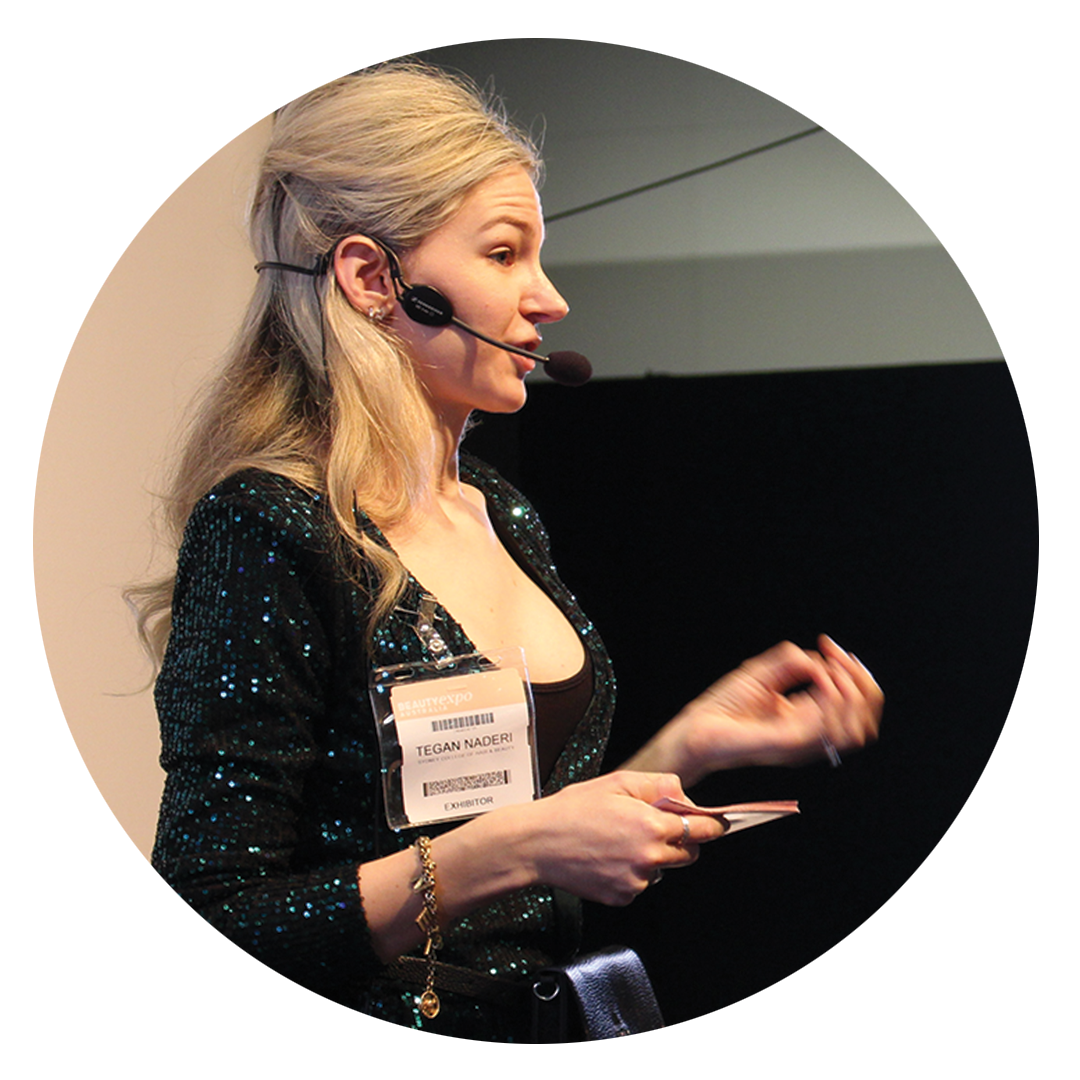
About the Author
Tegan Naderi is a long-time team member of SCHB and is mentored by Zara. She is a cosmetic tattoo artist and owner of VIP Brows, specialising in machine hair stroke tattooing. Tegan is also one of the cosmetic tattoo trainers and the SCHB online course creator.
Related Courses
Course 13: Inkless Stretch Mark Removal
Enrol now into this one day course and offer your clients permanent solutions for scars and stretch marks.
Course 4 : BB Glow Mesotherapy
Learn to provide BB Glow skin mesotherapy in just one day with our intensive hands-on training.
Course 6 : Cosmetic Tattooing for Lips
A one day intensive course that teaches lip liner, full lip colour, and lip blush techniques. Includes an online learning module with lifetime access.
Ready to start learning ?
